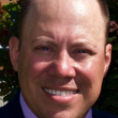Healthcare Innovation Conference: The Inventor’s Journey
Duke University School of Nursing and the North Carolina Biotechnology Center are teaming up to present a new Healthcare Innovation Conference on February 21. This daylong event will give healthcare professionals a roadmap for taking their idea and turning it into a full-fledged product. As part of the event, Duke Nursing associate professor Cristina Hendrix will moderate a panel featuring three North Carolina inventors who have navigated this journey. They’ll share their hard-won experience with attendees, in the hopes that others can learn from their successes and mistakes going forward.
From Idea…
 Jay Annis had worked as a Certified Registered Nurse Anesthetist since 2005, and in that time he had seen a revolution in how patients with difficult airways were intubated during surgery. For the first time, video laryngoscopy allowed anesthetists to see the airway as they worked – but they still had trouble placing the tube accurately.
Jay Annis had worked as a Certified Registered Nurse Anesthetist since 2005, and in that time he had seen a revolution in how patients with difficult airways were intubated during surgery. For the first time, video laryngoscopy allowed anesthetists to see the airway as they worked – but they still had trouble placing the tube accurately.
“I theorized that a small angled flexible introducer tip extending beyond the end of the endotracheal tube could remedy this clinical problem,” said Annis. That tip would guide the tube right into the windpipe, solving a problem that had plagued not only anesthetists, but all health professionals who needed to quickly insert a breathing tube, including emergency physicians and EMTs. He added an oxygen port for good measure, and the idea for the J-Wand was born.
 Marybeth Tetlow was working as a nurse at Duke’s Pediatric Blood and Marrow Transplant Program, and found that many of her young patients were getting body fluids on their central lines and IV tubing. It was messy and hazardous for both the patients and the providers. “One day,” she said, “my clinical team lead came to me with a sewing pattern of a vest that she and our manager had found online, and they asked me to sew it.” Unsatisfied with that design, Tetlow created her own version – a vest with a sleeve to contain the lines.
Marybeth Tetlow was working as a nurse at Duke’s Pediatric Blood and Marrow Transplant Program, and found that many of her young patients were getting body fluids on their central lines and IV tubing. It was messy and hazardous for both the patients and the providers. “One day,” she said, “my clinical team lead came to me with a sewing pattern of a vest that she and our manager had found online, and they asked me to sew it.” Unsatisfied with that design, Tetlow created her own version – a vest with a sleeve to contain the lines.
She quickly discovered that the sleeve alone worked for more patients than the vest, so she focused on refining the sleeve. Word spread, and soon she was sewing sleeves for doctors and nurses across the hospital system. “Everyone loved them and told me I had to sell them, so that patients everywhere could benefit from them,” said Tetlow. With that, the idea for the Line Snuggler was born.
 Samuel Fox began his journey at a considerably younger age than Annis or Tetlow. He was only a Junior in the biomedical engineering program at Duke’s Pratt School when a professor put him in touch with a local occupational therapist. She shared with him how cumbersome and dangerous it was to move patients from their beds to a wheelchair. The existing sling-and-lift system seemed unwieldy, so Fox began to develop a competitive technology that used inflatable cushions.
Samuel Fox began his journey at a considerably younger age than Annis or Tetlow. He was only a Junior in the biomedical engineering program at Duke’s Pratt School when a professor put him in touch with a local occupational therapist. She shared with him how cumbersome and dangerous it was to move patients from their beds to a wheelchair. The existing sling-and-lift system seemed unwieldy, so Fox began to develop a competitive technology that used inflatable cushions.
More than a year into the process, he hit a major roadblock. In a meeting with two Duke Health administrators, “they advised against trying to replace against the sling and lift systems, and to focus instead on patient turning and repositioning,” said Fox. “They said there were no good solutions for this problem, and that repositioning occurs ten times more frequently than bed-to-wheelchair transfer in the hospital.” Though it was hard to abandon all the work he had done, he made a quick pivot to this new direction, and the idea for the EasyShift was born.
…To Reality
In order to turn the J-Wand prototype into a marketable product, Annis needed a partner. He found one in D-R Burton Healthcare of Farmville, North Carolina. “Over the course of three years, I worked with a dedicated team that brought the product from a prototype to a device that is currently being sold nationwide,” he said. “I quickly learned that it is imperative to have a group of folks with a diverse knowledge of medical device development. Experts in engineering, manufacturing, marketing, and sales are crucial to overall product success.”
Tetlow, by contrast, turned to an in-house partner to develop her idea. “I reached out to the Duke Office of Licensing and Ventures to help with a design patent,” she said. “They also connected me to the Duke regulatory office to help with the FDA process. They even connected me to a business guru who helped build the business platform and took the lead with manufacturing.” Line Snugglers are now being trialed in several other hospitals, and she’s beginning to market the product to many more.
After that initial snag, Fox hit the ground running. He founded his own company, Seneca Devices, and built a network of advisors and funders. And thanks to his Duke network, he has had access to the kind of product development pipeline most inventors only dream of. “We interviewed over 60 nurses and administrators at Duke's three hospitals and ran focus groups with early prototypes at the Duke Health Innovation Lab in the School of Nursing,” said Fox. After using that valuable data to finalize his design, he ran a usability test with caregivers that turned out to be a smashing success. If all goes well, the idea that began in his student days should hit the market by early 2021.